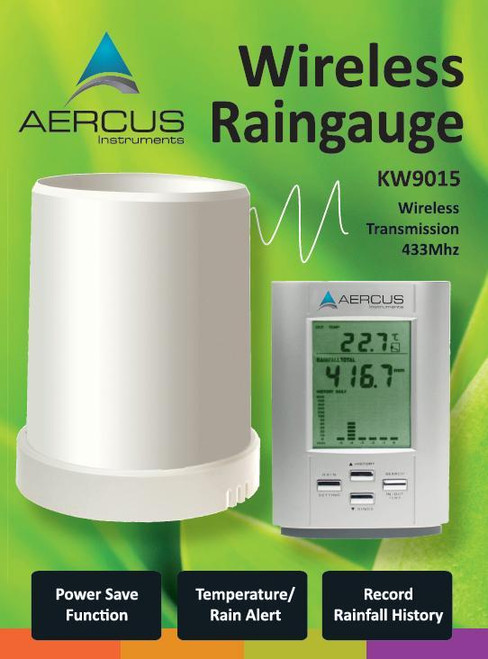How to Pick the Right Rain Gauge for Reliable Precipitation Monitoring
How to Pick the Right Rain Gauge for Reliable Precipitation Monitoring
Blog Article
Revealing the Science Behind Rain Gauges: Exactly How These Gadgets Play an Essential Role in Environment Study and Environmental Surveillance
Rain determines, relatively straightforward gadgets, hold a profound relevance in the realm of environment study and environmental tracking. These humble tools quietly collect one of nature's most vital aspects-- rainfall. Behind their unpretentious facade exists a complicated scientific research that is vital for recognizing the dynamics of our setting. As we peel back the layers of this clinical veil surrounding rainfall assesses, we reveal a world where precision, data precision, and thorough observation merge to unveil a much deeper understanding of our changing climate and its influence on the planet.
Significance of Rain Scales
Rain gauges play an essential role in monitoring and gauging precipitation degrees, giving essential information for climate research and evaluation. These gadgets are basic in quantifying the amount of rains that occurs in a certain area over a certain period. By accumulating and gauging rainwater, rainfall assesses offer important understandings into the circulation and strength of rainfall, assisting meteorologists, hydrologists, and climatologists in understanding weather patterns and trends.
Additionally, long-term information gathered from rainfall assesses helps in examining environment change influences and patterns, adding considerably to scientific research study and decision-making procedures. In significance, rainfall gauges offer as vital devices in the field of weather forecasting and environmental science, playing an important role in advancing our understanding of weather and environment dynamics.
Types of Rain Gauges

Performance and Procedure
In the world of environment study and atmospheric studies, the performance of rain determines lies in their elaborate capability and accurate functional mechanisms. Rain evaluates are created to properly determine the amount of precipitation that falls over a particular location during a collection period.
The functionality of rain determines is based upon the concept of measuring and collecting rain in a standard manner. This collected data is crucial for understanding neighborhood weather patterns, tracking long-term environment trends, and examining environmental effects. To guarantee precise measurements, rain gauges demand to be purposefully placed in open areas away from obstructions such as structures or trees that could disrupt the collection procedure.
The functional aspect of rainfall assesses entails normal upkeep to stop debris accumulation, calibration checks to maintain measurement accuracy, and data tape-recording for analysis (rain gauge). In general, the capability and operation of rainfall gauges are essential for collecting dependable rainfall data essential to environment research and ecological tracking
Function in Climate Research Study
Offered the important significance of precise precipitation measurements in recognizing weather patterns and ecological influences, the duty of rain determines in climate research study is important. Rainfall assesses give important information for environment research study by evaluating the quantity of precipitation that tips over a particular location during an offered period. This data is essential for keeping track of long-lasting trends in precipitation patterns, examining the influence of climate change on rainfall distribution, and boosting climate versions.

Environment scientists utilize information accumulated from rain assesses to assess variations in precipitation levels, recognize regional environment patterns, and examine the effectiveness of water source administration techniques. By contrasting historic rainfall data with existing measurements, researchers can discover shifts in rainfall patterns, such as adjustments in the frequency or intensity of rainfall occasions. This info is essential for understanding just how environment modification is influencing precipitation dynamics and can aid policymakers make informed choices regarding adjustment and reduction methods.
Applications in Ecological Surveillance

In flood projecting, rainfall scale information assists to track rainfall strength and circulation, allowing authorities to issue timely cautions and take necessary actions to mitigate flooding threats (rain gauge). Dry spell surveillance counts on rain gauge data to assess dampness degrees in the soil and track precipitation deficiencies, assisting in the recognition of drought-prone locations and the implementation of dry spell action techniques
In addition, rainfall scale information plays a vital duty in water source administration by offering details on water accessibility and navigate to this site usage trends. This information is made use of to make educated decisions concerning water allotment, preservation procedures, and lasting water resource preparation. In addition, in farming, rainfall scale information aids farmers in optimizing irrigation timetables, crop choice, and general ranch administration methods based upon regional rainfall patterns. Generally, rain their explanation determines are important devices in environmental tracking, providing beneficial understandings that add to notified decision-making and lasting source administration.
Final Thought
In final thought, rainfall evaluates are vital tools for measuring rainfall, giving useful data for climate research study and ecological monitoring. With different kinds and capabilities, rain determines play a crucial function in comprehending rainfall patterns and their influence on the environment. By accurately determining rainfall, these gadgets add to the improvement of clinical knowledge and aid in making educated decisions pertaining to water source administration and disaster preparedness.
Rainfall assesses play an essential role in surveillance and gauging rainfall levels, providing vital data for climate research study and evaluation. The standard rainfall gauge, understood as the "tipping container" scale, is one of the most commonly utilized devices. Ultrasonic rainfall evaluates use audio waves to find the visibility of rain, offering real-time information on precipitation degrees.Climate researchers make read review use of information accumulated from rain assesses to assess variations in rainfall degrees, recognize regional environment trends, and assess the efficiency of water resource monitoring methods.In verdict, rainfall gauges are crucial tools for determining rainfall, giving beneficial information for climate research and environmental monitoring.
Report this page